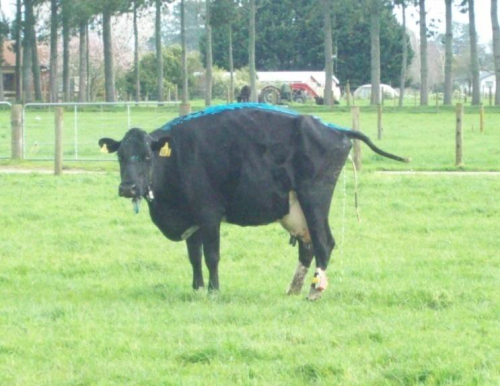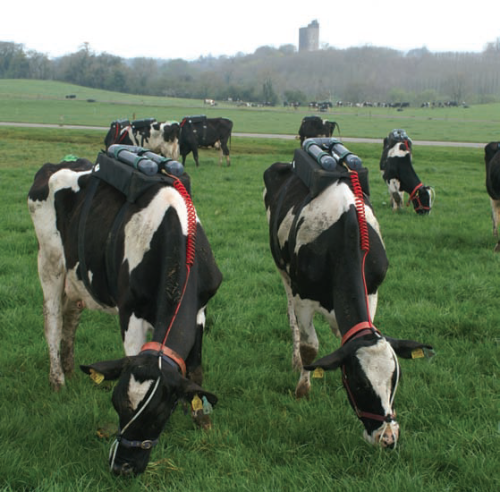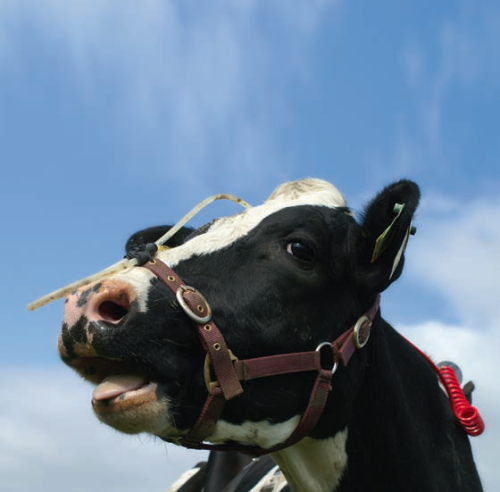Research companies measure all kinds of unusual things these days. Two separate, unaffiliated research groups have recently taken quite an interest in measuring cows’ bodily functions.
Agresearch, a New Zealand-based agricultural organization has developed GPS and urine sensors to determine all the details of cow urination. What they really want to know is how much nitrogen is being expelled when a cow relieves itself.

Cows hooked up to urination sensors. (Image via Agresearch)
Why measure cow urine?
Farmers in New Zealand are experiencing hardships as a result of the nitrogen in cow urine that has been leaking into waterways. Researchers hope that this technology can lead to breeding cows with lower levels of nitrogen in their urine.
The sensors are so comprehensive that they test each and every time a cow urinates. Researchers find that the levels in cows’ urine even differ between night and day.
To collect their data, Agresearch scientists used remote sensing tools.
Keith Betteridge, lead scientist at Agresearch has been working on the issues regarding nitrogen leakage into Lake Taupo in New Zealand for about 12 years, trying to figure out how to end this damage. He’s worked with Japanese researchers to develop the tools to map soil fertility and sensors to generate clear and inclusive data sets.
“A Zigbee system is used to communicate urine volume and N content data to a laptop when requested. With Zigbee nodes around the paddock, the cow’s position when urinating can also be determined and logged. This enables researchers to quantify the amount of urinary N within identified urine patches, should the patches be required for research purposes,” said Betteridge.
Finally, they have successfully developed GPS and urine sensor devices used to determine exactly when and where cows urinate.
“The sensor will also be used to validate the expected outcomes of mitigation strategies and tools, such as increasing the cows’ intake of common salt, as a diuretic, to increase daily urine volume and to reduce Nitrogen content,” said Betteridge.
Agresearch isn’t the only company interested in cows’ effects on the environment. The Irish Agriculture and Food Development Authority (Teagasc), located in Fermoy, County Cork, Ireland has developed sensors that measure cow flatulence and belching.

Cows undergoing methane measurement at Moorepark, CountyCork, Ireland. (Image via Teagasc)
Why measure cow flatulence and belching?
Cows have four stomachs, the first of which produces methane gas. Methane gas is considered a dangerous and complicated gas, often associated with global warming.
To measure these bodily functions on the cows, researchers at Teagasc use the “SF6 tracer gas technique.” SF6, or sulfur hexafluoride is an inorganic, odorless, and nonflammable greenhouse gas. The researchers fill tubes with a known amount of SF6 gas, and after the cows swallow the tubes, they measure what portion of that gas is emitted.
The cows are strapped to methane-measuring devices that collect the gas excretions. Back at the lab, researchers measure the amount of gas in the canister that the cows have just burped and flatulated into and calculate the proportion of SF6 released in a 24-hour period.

Most enteric methane is emitted during belching and exhalation. (Image via Teagasc)
“Our objective is for the cows to produce as little methane as possible for the milk solids they produce. So, we focus on reducing the intensity of methane emissions,” said Eva Lewis, dairy cow nutrition officer at Teagasc.
It looks like cows have become a popular science subject. What will researchers measure next?
Advertisement
Learn more about Electronic Products Magazine





